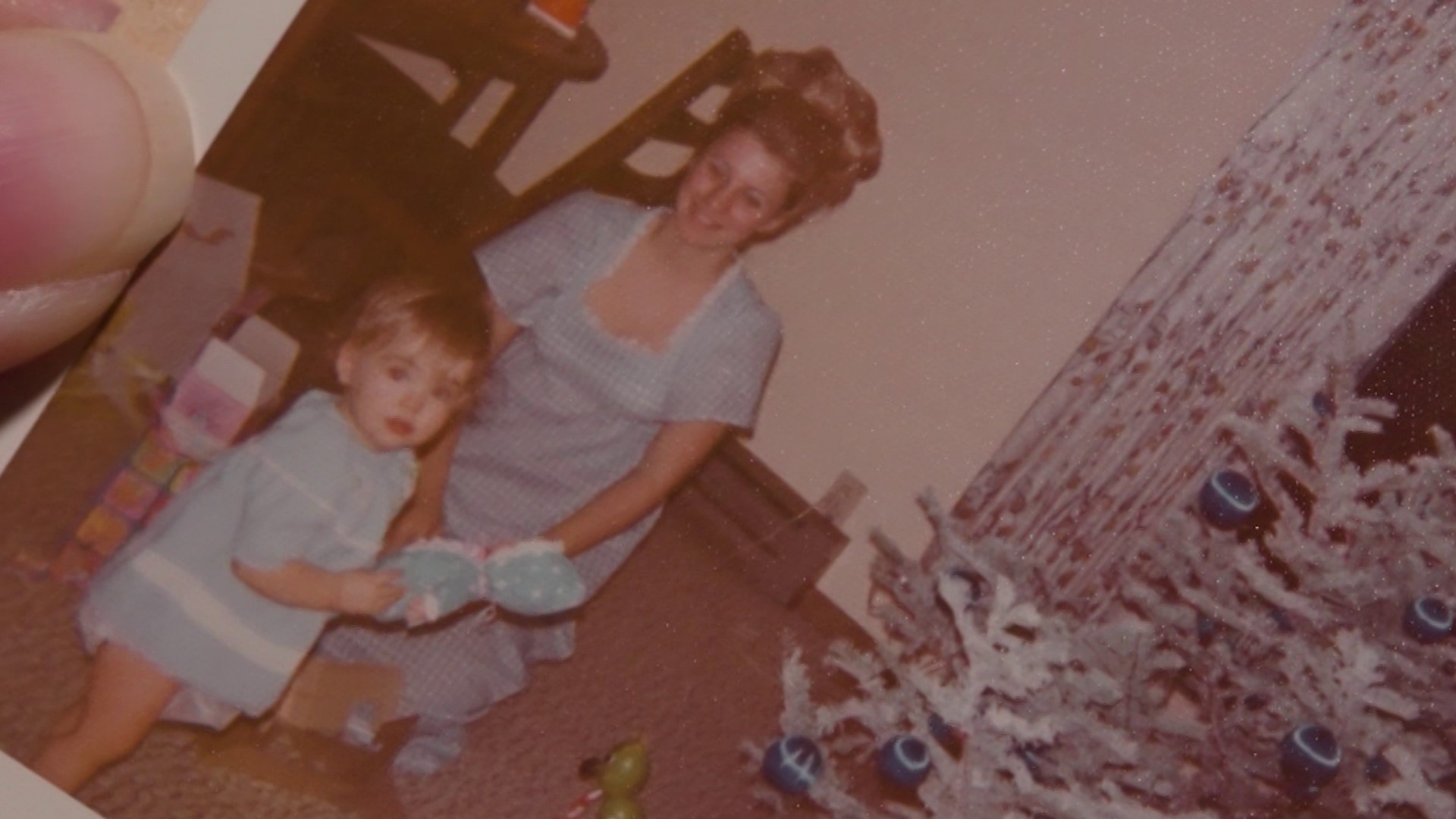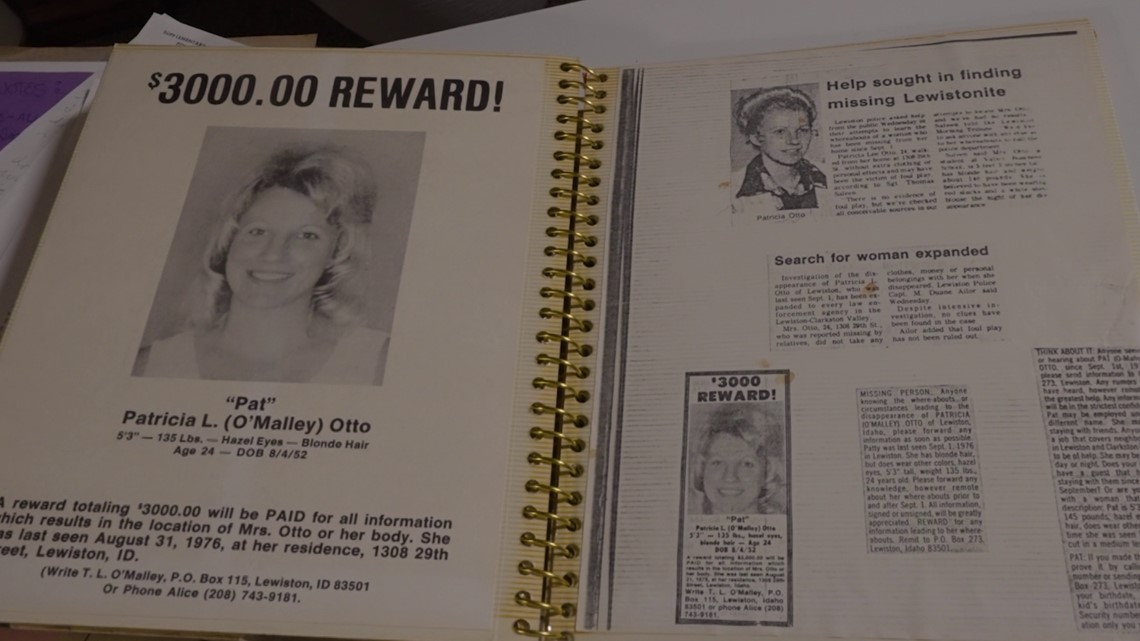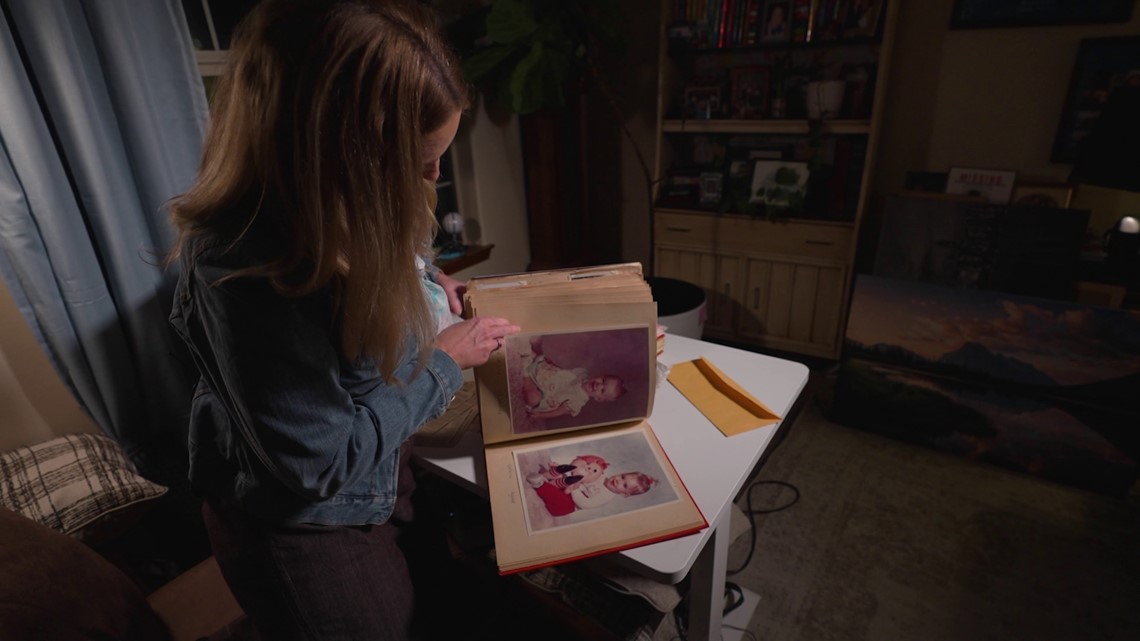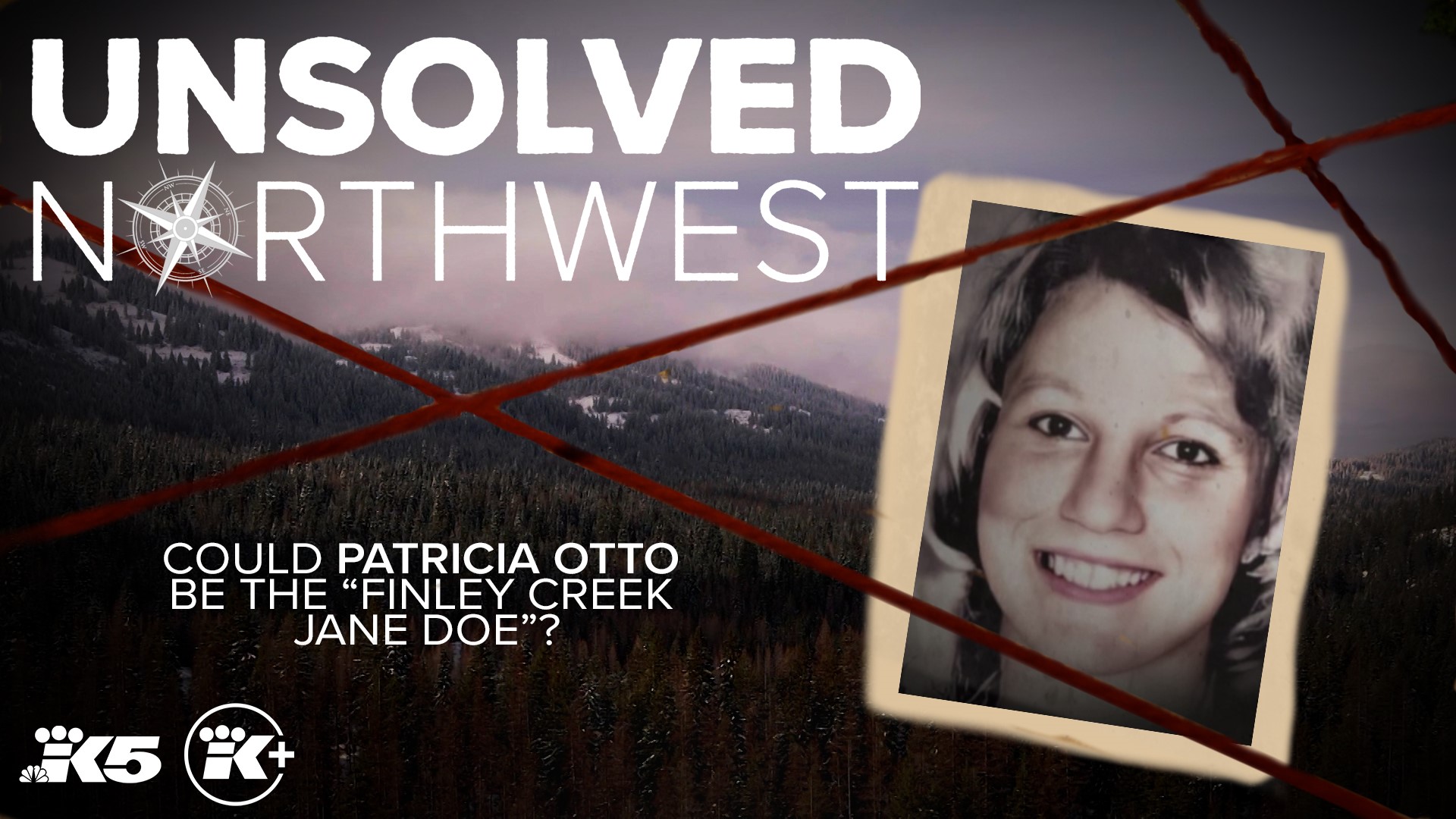Could Patricia Otto be a Jane Doe found in Oregon nearly 50 years ago? Her daughter thinks so
Patricia Otto was a 24-year-old mother who went missing from Lewiston, Idaho, in 1976. Now, some think she could be a Jane Doe found in Oregon two years later.

A Walla Walla woman is looking to solve her mother's missing persons case that has been cold for nearly five decades.
She believes a Jane Doe found in Oregon is her mom, but the key piece of evidence needed to prove her case was destroyed.
Patricia Otto goes missing
Patricia Otto was a 24-year-old mother of two when she went missing from Lewiston, Idaho, on Aug. 31, 1976. She was last seen wearing red pants, a white blouse and ankle-length boots.
On that night, the then-3-year-old daughter of Otto, Suzanne Timms, saw a physical fight between her mother and father.
"I was a curious 3-year-old, so when I heard crashing and screaming, I went to go investigate and I creeped up the stairs and looked through the railing and my mother and father were in a physical argument and they were putting hands on each other and I was scared," Timms said. "And I remember him putting his hands on her neck, pushing her up against the wall and dragging her out of my sight and that was the last time I saw her.”
Timms said after her mother disappeared, he told her that she left the family because she did not want to be a mother anymore.
"As an adult now and as a mother, it’s devastating to know that not only did she not leave us, but I was angry at her for all those years, and my anger was put in the wrong place," Timms said.
The Lewiston Police Department (LPD) looked at the father as the main person of interest. Two months after her mother disappeared, Timms' father was arrested for an unrelated crime.
He was sentenced to 10 years for attempted murder after he hired a hitman to kill an LPD detective. According to LPD, there are no other persons of interest in the case.
He died a few years later in 1983, and left his daughter with many questions.
"I still don’t have answers. I have theories, but I don’t really have answers," Timms said.


Connection made between Otto and Oregon Jane Doe
Timms follows multiple missing persons accounts on social media and stumbled upon a clue about her mother's disappearance while scrolling online in 2021.
There, on her phone screen, was a photo of herself looking back at her. Well, someone who looked nearly identical to her.
"I click on the information, and it describes a Caucasian, young female found in the forest in 1978 wearing red pants and a white blouse," Timms said. "There’s no way this drawing is me dressed in the same clothes that my mother was wearing when she disappeared."
The photo was a sketch of a Jane Doe that came from Redgrave Research Forensic Services. The company was hired by a group of researchers working the Jane Doe case 80 miles south of Walla Walla in La Grande, Oregon.
According to the forensic genealogist who created the sketch, Dr. Anthony Redgrave, multiple markers can be found in skeletal remains that can determine the shape of a person's eyes, nose, etc.
While Redgrave can't comment on whether he thinks Otto is this Jane Doe, he says the process is useful in multiple ways.
"The fact that both the Finley Creek Jane Doe case and the Patricia Otto case have gotten so much more attention since I was able to make this art that in and of itself is absolutely worth it," Redgrave said.
Watch the full interview with Dr. Redgrave, where he talks about the process of creating these images, here:
A familial connection to Finley Creek Jane Doe
In late August 1978, a group of people hunting in rural Union County, Oregon, came across a shallow grave. Inside that grave were the skeletal remains of what is now known as the Finley Creek Jane Doe.
Among the group was an 8-year-old boy, who discovered the body.
Years later in 2010, Suzanne Timms got married. Unbeknownst to her, she married into the family who found the Jane Doe that August day in Oregon. That 8-year-old boy? He is now her father-in-law.
"It seems absolutely absurd and it’s almost like my mother is solving her own homicide from the grave," Timms said.
Key piece of evidence destroyed
Melinda Junderberg is the lead researcher on the Finley Creek Jane Doe case.
"Immediately, the whole case was scattered to different parts of Oregon, and trying to keep track of that was incredible," Junderberg said.
The Redgrave researchers continued investigating and acquired more case files. Then, they discovered a glaring problem.
Jane Doe's DNA was gone.
"The case file was 48 pages in 12 years. That’s not a murder file. That’s very little. I saw 'case closed' first," Junderberg said. "Then wait a minute, destroy the evidence? How can they destroy the evidence?"
In 1990, Oregon State Police closed the case and sent the remains of Finley Creek Jane Doe to a crematorium to be destroyed.
"It’s like 47 years of pain wrapped up in one piece of paper that says 'case closed,'” Timms said.
If officials had Jane Doe's remains or any evidence with a trace of DNA, this question could be answered easily.
"It would have been solved within the next few years with the advent of DNA if that had not happened," Junderberg said. "So, very frustrating."


What officials have to say
Unsolved Northwest turned to Washington State Patrol to see if one of their forensic odontologists could look at Otto's dental X-ray and compare that to the Medical Examiner's photos of the remains.
They are confident it is not the same person.
Timms and Junderberg are both "99.9% convinced" that Patricia Otto is the Finley Creek Jane Doe.
Otto's case is still open with the Lewiston Police Department. The detective on the case says the Finley Creek Jane Doe could be Otto, but there has not been enough evidence to support it.
The department is also trying to work with a United Kindom-based lab with technology that can utilize dental records, autopsy photos and more to generate a realistic photo of what someone may have looked like.
'I want her to matter'
Timms is praying for a break in the case.
"I have her handwriting. I have pieces of her. I have a glimpse of the kind of person I think she would be. I don’t have her," said Timms said. "I don’t have my own memories."
What Timms does still have is hope. Hope that she will find out what really happened to her mother.
"I want her to matter," she said.


Do you want to hear more about Unsolved Northwest? Text the word UNSOLVED to (206) 448-4545 to get messages from the team about the latest cases and updates on past stories, or to send them your questions.
Watch KING 5's Unsolved Northwest playlist here:


